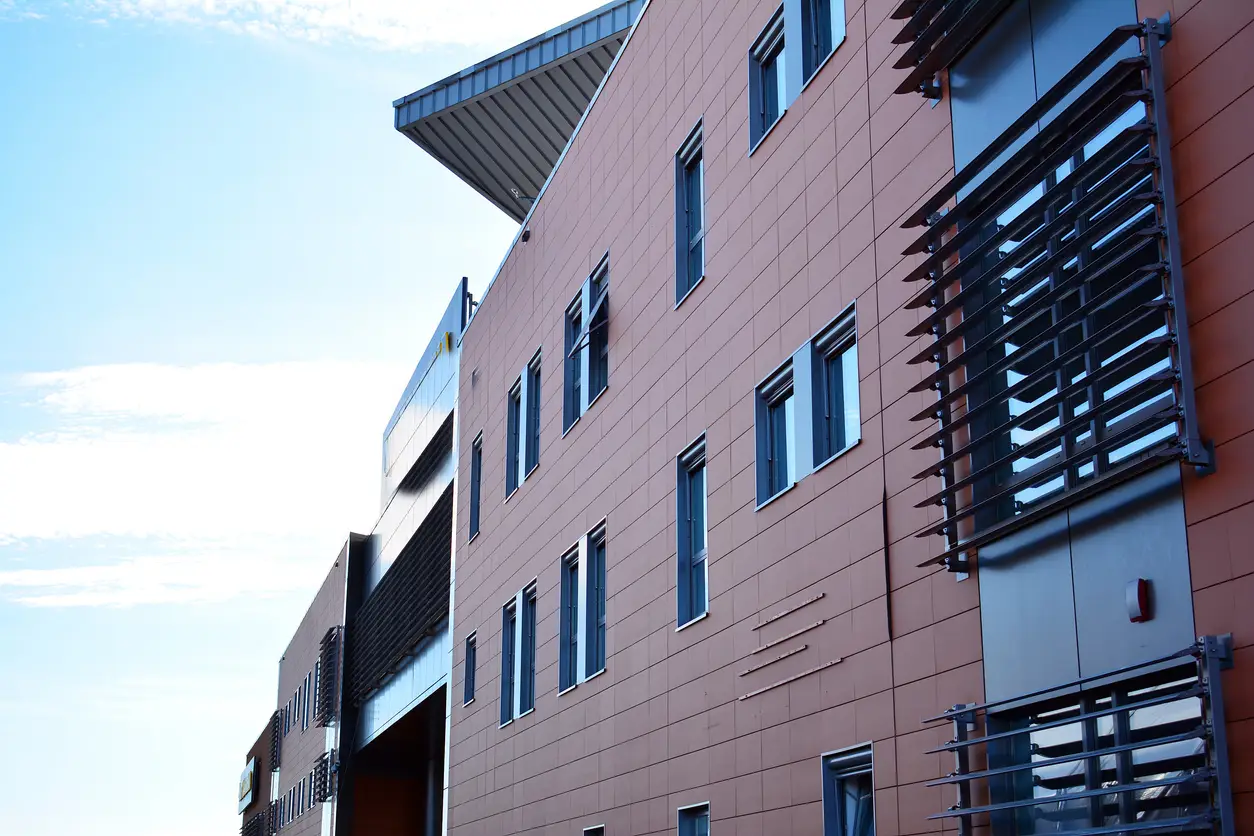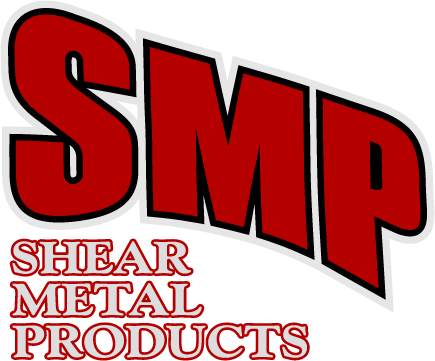
- November 10, 2025
- Insulated Metal Panels
- Difference Between Insulated Metal Wall Panels and Prefabricated Panels
In modern construction, builders and designers are constantly looking for ways to improve efficiency, durability, and energy performance. Two building solutions that have become especially popular are prefabricated panels and insulated metal wall panels (IMPs). Both are designed to speed up the construction process and create strong, long-lasting building envelopes. However, they differ in how they’re made, how they perform, and where they’re best used. Knowing these distinctions can help architects, contractors, and property owners make a more informed decision for their specific project needs.
Prefabricated Panels
Prefabricated panels, often called prefab panels, are construction components manufactured in a controlled factory environment and then transported to the building site for assembly. These panels can include wall systems, floors, and even full building modules made from materials such as concrete, wood, or metal. Prefabrication streamlines the construction process by reducing on-site labor and ensuring quality control during manufacturing.
Prefab panels have become increasingly popular in commercial, residential, and industrial applications due to their speed of installation and cost predictability. From modular homes to large warehouses, prefabricated systems allow projects to be completed faster and with less waste compared to traditional construction.
Pros of Prefabricated Panels
- Faster Construction Time:
Prefabricated panels are built off-site and arrive ready for assembly. This reduces construction timelines dramatically, sometimes cutting total build time by 30–50%. - Cost Efficiency:
Because prefab systems minimize labor, material waste, and weather-related delays, they often result in lower overall project costs. - Controlled Quality:
Manufacturing in a factory ensures precision and consistency. Each panel is produced under strict quality standards, leading to fewer on-site errors. - Reduced Environmental Impact:
Prefab construction generates less waste, uses materials more efficiently, and often includes options for recyclable or sustainable materials. - Versatility in Design:
Prefabricated systems can be customized for various aesthetics and structural needs. They are compatible with different architectural styles, whether modern, industrial, or minimalist.
Cons of Prefabricated Panels
- Transportation Challenges:
Large prefab components can be expensive and logistically difficult to transport, especially for remote or urban sites with limited access. - Limited On-Site Flexibility:
Because panels are pre-manufactured, any design changes during installation can be costly or impossible without remanufacturing. - Structural Limitations:
Depending on the material used, prefabricated panels may not achieve the same strength or load-bearing capacity as other systems, especially for high-rise or heavy-duty applications.
Initial Planning Complexity:
Prefab construction requires precise planning and coordination between designers, engineers, and manufacturers early in the process. Delays in design approval can affect the entire production schedule.
Insulated Metal Panels (IMPs)
Insulated Metal Panels (IMPs) are high-performance building materials that combine insulation and metal cladding into one integrated panel. Typically, an IMP consists of an insulating foam core, such as polyurethane or polyisocyanurate, bonded between two layers of metal sheeting. These panels are used for exterior walls, roofs, and cold storage facilities due to their exceptional thermal performance and structural integrity.
Unlike general prefabricated panels, which can include various materials, IMPs are specifically designed to enhance energy efficiency, weather resistance, and long-term durability. They are especially popular in commercial and industrial buildings, including warehouses, data centers, manufacturing plants, and food processing facilities.
Pros of Insulated Metal Panels (IMPs)
- Superior Thermal Performance:
IMPs offer excellent insulation properties thanks to their continuous foam core. They create an airtight building envelope that minimizes heat transfer, reducing energy consumption for heating and cooling. - All-in-One Construction:
Because IMPs combine insulation, vapor barrier, and structural support into a single component, installation is faster and simpler than traditional wall systems that require multiple layers. - Design Flexibility and Aesthetic Appeal:
IMPs come in various finishes, textures, and colors, allowing architects to achieve both modern and industrial looks without compromising function. - Durability and Low Maintenance:
The metal skins resist corrosion, weathering, and physical damage, ensuring a long lifespan with minimal upkeep. IMPs can last decades with proper maintenance, making them a cost-effective long-term investment. - Energy Efficiency and Sustainability:
The high R-values of IMPs help buildings meet strict energy codes. Many IMP systems are also recyclable, supporting green building initiatives such as LEED certification. - Fire and Moisture Resistance:
IMPs provide excellent protection against moisture infiltration, mold growth, and, depending on the core material, fire. This makes them ideal for controlled environments like food storage or cleanrooms.
Cons of Insulated Metal Panels (IMPs)
- Higher Upfront Costs:
While IMPs can lower long-term operational costs, their initial purchase and installation price is often higher than standard prefabricated panels. - Specialized Installation Requirements:
Proper installation requires trained professionals familiar with handling and sealing metal panels to prevent thermal bridging and air leaks. - Limited Retrofit Applications:
Because of their integrated structure, IMPs are best suited for new construction rather than renovation projects where existing walls may not align with their design requirements. - Potential for Dents or Surface Damage:
Although highly durable, the metal surface can be susceptible to dents if impacted by heavy machinery or equipment.
Conclusion
At Shear Metal Products (SMP), we specialize in helping clients achieve high-performance building envelopes through the design, supply, and installation of insulated metal panel systems.
While both prefabricated panels and insulated metal wall panels (IMPs) aim to enhance building performance and simplify construction, their applications and advantages differ greatly. Prefabricated panels are typically chosen for fast, modular construction, but they often require additional systems to achieve higher energy efficiency and long-term durability.
Insulated metal panels, however, are purpose-built for superior performance. They provide exceptional thermal insulation, weather resistance, and structural integrity—qualities that make them ideal for modern commercial, industrial, and institutional buildings. Their clean aesthetic, low maintenance needs, and long service life make IMPs a smart investment for projects focused on efficiency and sustainability.
At SMP, we specialize exclusively in the design, supply, and installation of insulated metal panel systems, helping construction teams achieve high-performance building envelopes that meet strict energy standards while maintaining architectural appeal. We do not work with prefabricated wall panels, but our expertise in IMP systems ensures every project benefits from proven durability, precision engineering, and long-lasting value.
